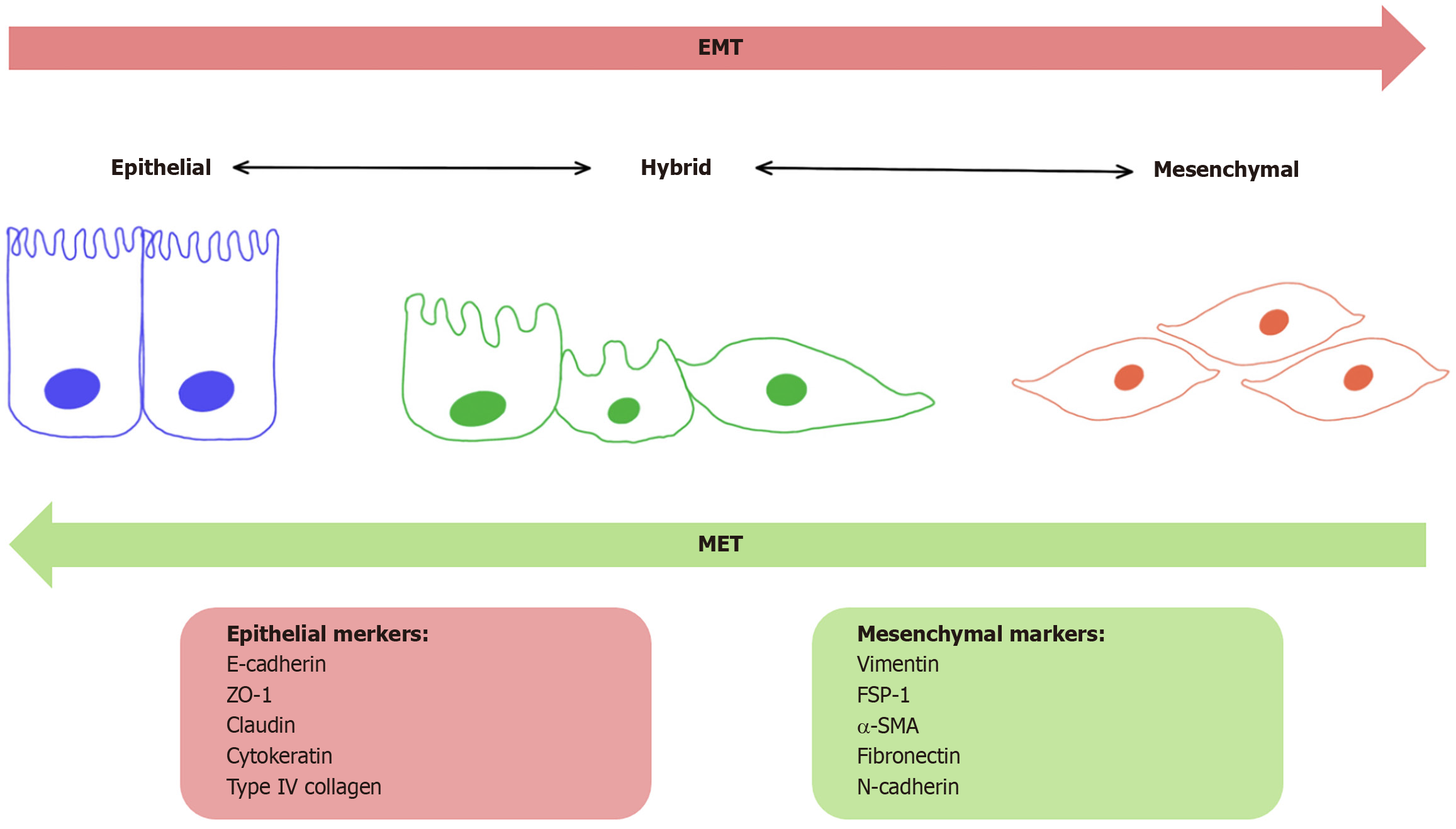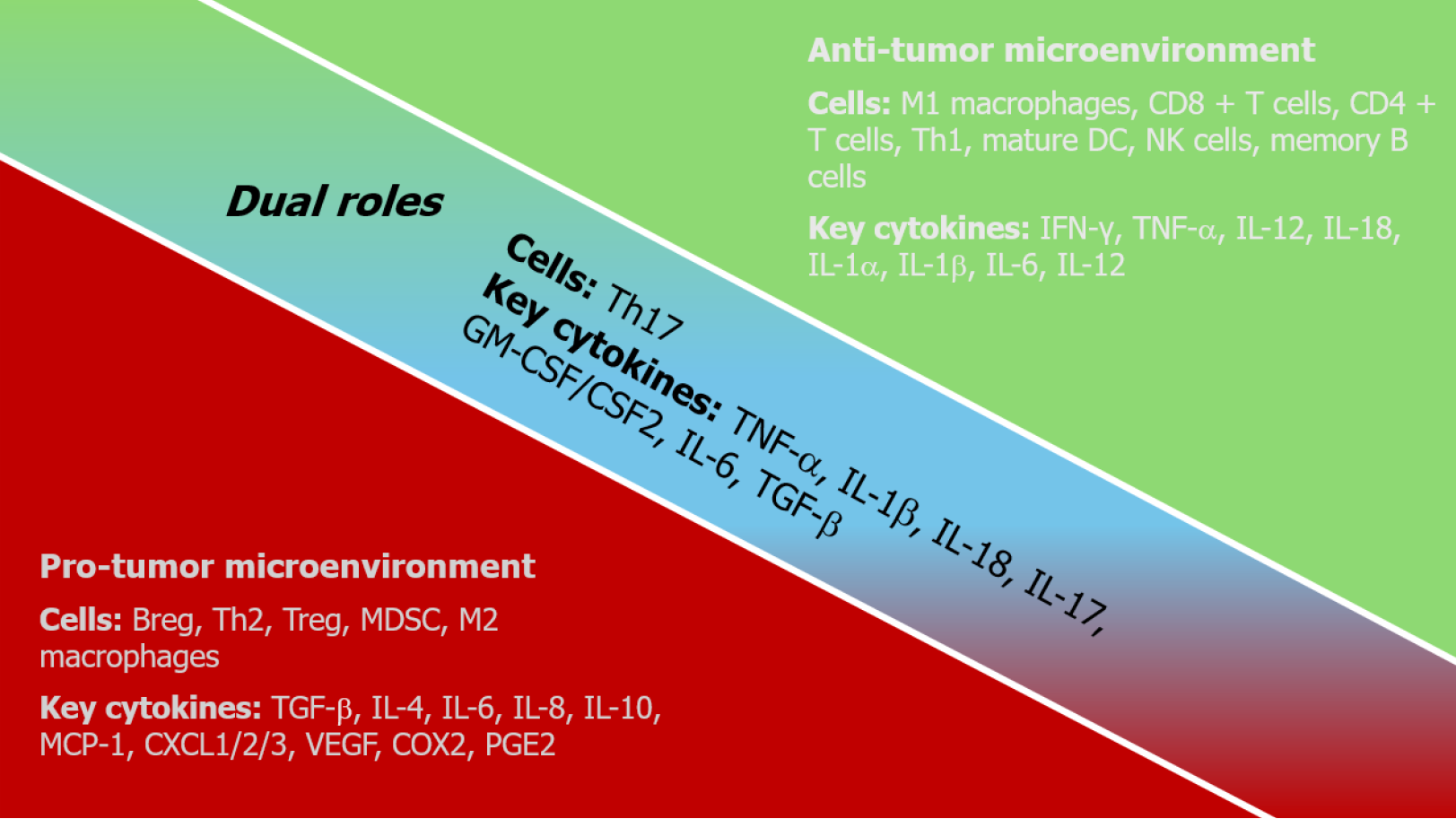Copyright
©The Author(s) 2025.
World J Clin Oncol. Jul 24, 2025; 16(7): 107339
Published online Jul 24, 2025. doi: 10.5306/wjco.v16.i7.107339
Published online Jul 24, 2025. doi: 10.5306/wjco.v16.i7.107339
Figure 1 Morphological changes and markers of epithelial-to-mesenchymal transition process.
Epithelial-to-mesenchymal transition (EMT) is characterized by the transition of epithelial cells, which typically exhibit apical-basal polarity and tight cell-cell adhesion, into mesenchymal-like cells with enhanced migratory and invasive capabilities. Morphological alterations include the loss of epithelial cobblestone-like morphology and the acquisition of an elongated, spindle-shaped phenotype. At the molecular level, EMT is marked by the downregulation of epithelial markers such as E-cadherin and the upregulation of mesenchymal markers including N-cadherin, vimentin, and fibronectin. These changes collectively contribute to increased motility, invasiveness, and resistance to apoptosis, facilitating cancer progression and metastasis. EMT: Epithelial-to-mesenchymal transition; FSP-1: Ferroptosis-suppressor-protein 1; MET: Metastasis; SMA: Smooth muscle actin; ZO-1: Zonula occludens-1.
Figure 2 Roles of immune cells and cytokines in tumor microenvironment.
Immune cells in the tumor microenvironment can exert pro-tumor (red), anti-tumor (green), or context-dependent dual roles (blue). The pro-tumor microenvironment includes immunosuppressive cells such as regulatory T cells, T helper 2 (Th2), regulatory B cells, myeloid-derived repressor cells, and M2 macrophages, along with tumor-promoting cytokines like transforming growth factor beta, interleukin 10 (IL-10), and vascular endothelial growth factor. By contrast, the anti-tumor microenvironment is characterized by effector immune cells including cluster of differentiation 8-positive T cells, Th1 cells, nature killer cells, and M1 macrophages, accompanied by proinflammatory cytokines such as interferon gamma, tumor necrosis factor alpha, and IL-12. Th17 cells and their associated cytokines represent dual-role elements, which may contribute to either tumor suppression or promotion depending on the tumor context and disease stage. Breg: Regulatory B cell; CD: Cluster of differentiation; CSF: Colony-stimulating factor; DC: Dendritic cell; GM-CSF: Granulocyte-macrophage colony-stimulating factor; IFN-γ: Interferon gamma; IL: Interleukin; MCP-1: Monocyte chemoattractant protein-1; MDSC: Myeloid-derived repressor cell; NK: Nature killer; PGE2: Prostaglandin E2; Treg: Regulatory T cell; TGF: Transforming growth factor; Th: T helper; TNF: Tumor necrosis factor; VEGF: Vascular endothelial growth factor.
- Citation: Çakal S, Er Urgancı B, Şimşek S. Key players in the breast cancer microenvironment: From fibroblasts to immune cells. World J Clin Oncol 2025; 16(7): 107339
- URL: https://www.wjgnet.com/2218-4333/full/v16/i7/107339.htm
- DOI: https://dx.doi.org/10.5306/wjco.v16.i7.107339














